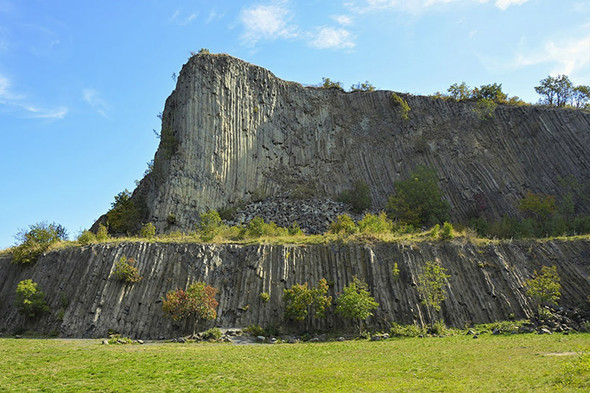You are new here? For the 2nd part of this article click here.
Keszthelyi hills, or more specifically the dolomite centre of it, is Hungary’s most versatile territory in species. The climate reflects Mediterranean effects at certain areas while in poorly lit cooler glens, plant species reminding to the ice age continue to grow. Near Balatonederics, on the eastern border of Keszthelyi hills there is the strictly protected Csodabogyós cave ranked as the 10th longest cave in Hungary and the 6th in Transdanubia. The cave, situated at 393 m above sea level on the strictly protected area of Balaton-felvidéki National Park, was named after a shrub (commonly known in English as butcher’s-broom) that can also be seen at the entrance of the cave and whose northern range border is also here. The currently known length of the cave branches is 5200 m, its depth is -121 m. Owing to its spectacular forms and the fact that is relatively easy to pass, it is perfectly suitable to be a “study cave”, in other words it is the right place for learning the techniques and practice of caving and cave researching and to present tectonic processes and different cave formations.
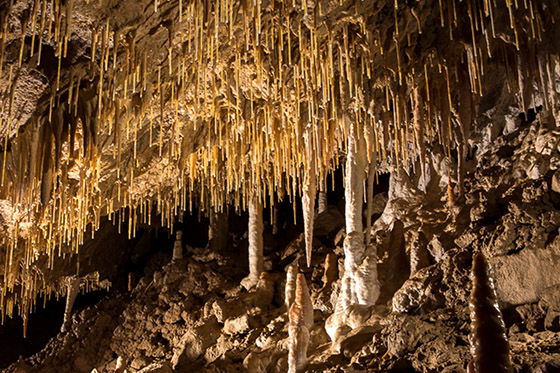
Kosty watermill stands in Zalaszántó. The neglected building was bought by the Balaton-felvidéki National Park’s Directorate in January 2000 within the framework of a Hungarian-Swiss cooperation. Supported by the Ministry for Environmental Protection and Water the building was renovated in 2003 and the exhibition rooms were set up in 2004. The youngest built attraction of the area lays at the boundary of the village: the largest Buddhist stupa of Central Europe was inaugurated here in 1993 with the participation of the Dalai Lama.
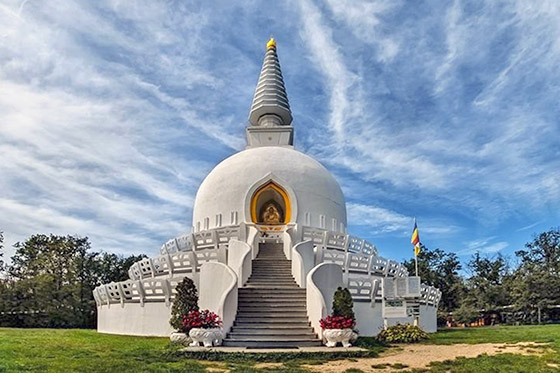
If we happen to visit the small village of Rezi we should not miss a walk to the ruins of the castle. This tourist attraction not only offers a beautiful view but, with its enticing footpaths, it is especially suitable for hiking. If we descend from the keep on the steep rocky slope, just with a five-minute walk we reach Sikalikja cave hidden inside the hill, the place where once hot water came to the surface (today hot water springs bubble up in Hévíz).
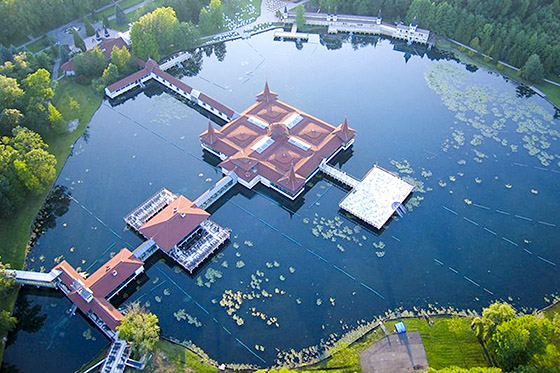
According to Dr Béla Darnay, the first researcher of the cave, the first place where Őshévíz came to the surface was at Meleghegy and the remains of its slot can still be seen at the caves. According to the legend, the spring dried up at the time of the penny-pinching castellan, Péter Pethő who did not allow poor sick people to take a bath in the medicinal water. After he had cruelly refused a craver, his servant rushed to him with the following news:
My lord! Fizzling and boiling, the spring spurted up to an extreme height, then fell back to the depth and disappeared. There are no traces of water anymore.
This has allegedly led to the financial decline of the Pethő family that lost not only its permanent income but all their gold coins turned into stone. This flat stones can still be seen around the castle.
Numerous tourist paths cross the seemingly impassable forest of Keszthelyi hills including the National Blue Trail inviting tourist for wonderful hiking adventures.
Of course the area separating the two wine regions is also abundant in sights to see. Who would possibly miss the basalt organ pipes of Szent-Gyögy hill or the lake cave in Tapolca?
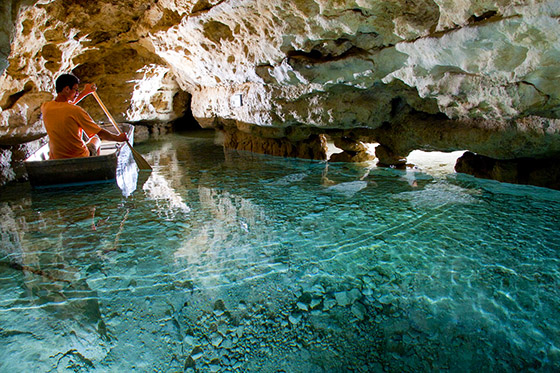
Besides all these, there is Balaton, the rich source of summer experiences, the lake inspiring first kisses and loves, an eternal dream of fishermen, the Mecca of sailors, the alpha and omega of beaches.
Those who bring themselves to depart from the water a bit and start off to the region may see great miracles. It is important though to keep your eyes open! The landscape is not cheap you have to go through the hoops to access the attractions. But climbing up to the hill top, you can see the surrounding basins and volcanic buttes, you can experience a the sense of awe looking at the two hundred-year old farmhouses and mansions of the lower nobility, you can taste the unique wines of Balaton-felvidék and can take delight in enjoying the view offered by the remote blue of the lake. In Sümeg you can participate in a medieval tournament just to go to Hévíz afterwards to relax after a long day’s fight, but you may also chose to sit down in the park of the palace of an old noble family and read the poems of the most famous forgotten poet, Sándor Kisfaludy. After hiking or caving, the thirsty adventurer can enjoy the quiet press houses or contemplate over deserted mines resembling to the moonscape inviting wanderers wishing for silence and susceptible to beauties away from the buzz of the crowded beach that does not reach here.
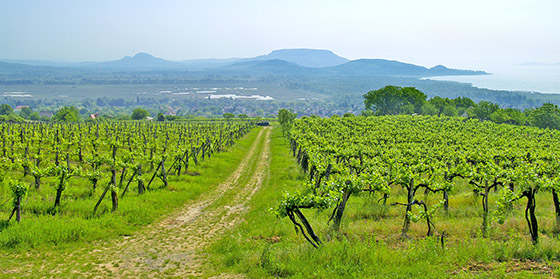
WineSofa’s team wishes you a nice time in Balaton-felvidék.



